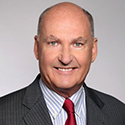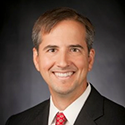
Opinions expressed in AGB podcasts are those of the speakers and not necessarily those of the organizations that employ them or of AGB.
Aired: April 14, 2023
Intercollegiate athletics is changing at a rapid pace with implications for regulatory, programmatic, and governance oversight. In this podcast, Kent State University President Emerita and AGB Senior Consultant Carol Cartwright speaks with Huron’s Tim Walsh and with Jim Delany, a former commissioner of the Big 10 Conference about conference realignment, name-image-likeness, regulatory environments, and what boards need to know.
Click to Read the Podcast Transcript
Introduction:
Welcome to the Trusteeship Podcast from AGB, the Association of Governing Boards of Universities and Colleges. We cover everything higher education leaders need to know about the challenges facing our nation’s colleges and universities. More important, we provide the facts and insight you need to solve those challenges and to be the storytellers and advocates higher education needs. Intercollegiate athletics is changing at a rapid pace with implications for regulatory, programmatic, and governance oversight. In this podcast, Kent State University President Emerita and AGB Senior Consultant, Carol Cartwright speaks with Huron’s Tim Walsh and with Jim Delaney, former commissioner of the Big 10 Conference about conference realignment, name image likeness, regulatory environments, and what boards need to know.
Carol Cartwright:
Welcome, everyone. We’re really pleased you could join us for what I know will be a very informative conversation with Jim Delany and Tim Walsh about intercollegiate athletics. We’re going to look at this issue from the viewpoint of the board’s role in governance. Of course, we mean governance in this case of intercollegiate athletics. As fiduciaries, the board has to make some decisions, not about every decision in athletics, but there are some key decisions that boards have to make. In order to do their due diligence and make good decisions, they really need to have some education. They need to have some important background information.
Jim, there’s just so much swirling around in intercollegiate athletics right now. We’ve got issues about realignment with student athletes, with how colleges and universities are positioned with NCAA governance, with the arms race. The list just goes on and on. How can boards get their heads around this in terms of what’s driving all this change? What are some of the most significant drivers of change that boards should be aware of and then learn about and understand?
Jim Delany:
Where I would start is with the modern-day NCAA, which really, while the “old testament” of the NCAA was 1906, really until about 1950. Theodore Roosevelt came together with others to create the old testament NCAA. Around 1950, Walter Byers established the “new testament” NCAA, and about that time they established control over television as well as creating championships. They moved along merrily for about 35 years. In the early ’80s, there was quite a bit of advocacy for the larger schools to take more control, both in terms of governance, but also in terms of television. The NCAA lost control of TV, went all the way to the Supreme Court and the Board of Regents case in a vote of 7-2. Over time, to a greater degree than ever before, our rationale educational rationale has given way.
You might say that we’ve lost the narrative. Best way to say that would be a lot of us said that we’re in the education business. The critic, plaintiff’s attorney would say, “No, you’re in the exploitation business. Coaches are making a lot of money. Facilities are being reimagined. The arms race is on, the NCAA is weakened, we’re in a tremendously disrupted environment, so stronger conferences, weakened NCAA and an unknown future.” As the NCAA got weaker in the center, power doesn’t go away, it goes some place. In these cases, the power moved towards the conferences, and the conferences became the dominant players. Institutions tended to move in the direction of resources and the resources were tied to the growth of college football TV.
Carol Cartwright:
So Jim, you said that the real key to a major change as you looked historically was 1950 with TV. Is there a single thing that we should be thinking about now that’s really the major focus of change or is it a number of things?
Jim Delany:
I think it’s a number of things actually, because the Supreme Court has spoken clearly both in 1984 and also in 2021. It seems to me in some ways it’s clear about some areas that we can’t act collectively, but it also, this has a chilling effect on schools and conferences’ proactivity or ability to come together in regulate variety of areas. So for example, there was nothing about those cases that required total freedom of movement in the obliteration of transfer residency requirements, but we moved in that direction nevertheless. NIL, I could make an argument for it, but not NIL as it’s presently structured. That’s pay for play.
Nobody anticipated that these not-for-profit collectives that are indirectly connected to institutions and are affecting the recruitment of players both at the high school level and the portal level would be what they are. I would suggest that the answer, if there is an answer, resides in some basic carve out describing the areas that the universities and conferences could regulate in without a great deal of fear of crossing the antitrust lines. Until that’s done, I don’t see the courage, the vision, or the clarity to bring the system back into balance as it may have been as recently as five or six years ago.
Tim Walsh:
Yeah, maybe just an ounce of additional context to compliment what Jim offered in response to your question about the cause of all this uncertainty, the cause of all the disruption and basically, the evolution of the model within intercollegiate athletics. The reality is these athletic programs are critically important to the institution as a whole in terms of the visibility they bring, the brand impact they can have, and ultimately, the value that they can create for the institution as it continues forward on its mission, not just from a financial perspective, the other types of elements within the university’s overall ecosystem. It generates a highly-competitive environment because institutions want to enhance those impacts from their athletic programs vis-à-vis their competitors in the academic portfolio. So you see universities acting in ways that are in their own best interests, almost ruthlessly at times within these athletic spheres.
That creates the kind of outcomes that we’re seeing where they’ll take advantage of every opportunity to enhance their outcomes, vis-à-vis those are the other institutions. The other part that has emerged periodically that I find much more reassuring frankly, is the continued focus on the outcomes on behalf of the student athletes. Just when institutions are moving in ways that are highly commercialized in many respects and really in the institution’s best interests, the interests of the student athletes re-emerges. That to me, is, again, a powerful force within these developing models is the impetus to continue to provide an exceptional experience for these student athletes, not just in football and basketball where the revenue is generated and where the brand impact is generally derived, but across the entire portfolio programs that these universities offer and sponsor. So that force will not go away if everyone continues to do their job in a responsible manner. That can be a very positive thing that continues to emerge as the industry evolves.
Carol Cartwright:
That’s a perspective I think we’ll probably come back to in terms of some specific examples. Jim, can we go back to the NIL and related issues, collectives, et cetera, question and give board members a little bit of a primer on what that’s all about and how you translated in, as you said, the Wild West right now of almost pay for play?
Jim Delany:
Well, if you think about NIL in its purest form, at least the way I understood it to be possible or theoretically applicable, that if you were a student and you wanted to use your reputation as an athlete to draw people in, or you wanted to be an influencer based on your reputation as an athlete, all of those things would be, I think, properly under the umbrella of what I understood NIL to be. I think that’s how people had visualized it. The relationship would be between the student and the marketplace. What it’s evolved to, to me, at least from the outside, and I don’t think there’s great transparency on these transactions, but you hear enough discussion, you read enough and you realize that these are market-created environments that where the money matches the talent of the athlete, they’re inducements.
I don’t think there’s would be very difficult to show that the collectives are tied to the institution. I don’t think it’d be very difficult to understand that the people in the collectives have close ties to the institution, and they’re talking to the coaches about targets, from portals and targets to retain players and targets coming out of high school, and that the amount of money is hundreds of thousands of dollars and not a prescribed marketplace.
I read as much as the trustees do. I don’t have any insight information since most of it came into effect over the last 24 months. But from what I read and the conversations I have with people who are close to it, there are at a minimum hundreds of thousands of dollars going to certain athletes, not a few, but probably hundreds if not thousands. But it’s still a small percentage of the total.
Certainly it’s not going to men and women equally, and certainly it’s not going to athletes equally across sport. Depending upon they’re essentially inducements, how that gets unraveled, can you get the toothpaste back into the dispenser? I don’t know. But I do know that if you look at the regulations of the NCAA that are intact, pay for play is not appropriate nor are inducements. Many schools, I think, have struggled with this based on their own history, their own traditions, but some have moved very quickly and very easily into this environment. I think a big question is the transparency on it, but more and what’s the market, what’s true market value? But more than that is when you have a collective and when you can tie the institution to it, what are the Title IX ramifications? Is that Title IX triggered?
Carol Cartwright:
I would suggest, I’m not sure that I could confirm this, but it seems to me that boards really haven’t been involved in the establishment of the collectives. They just started to grow and the institution lost control. Not only did the NCAA lose the opportunity to regulate, but in my view, institutions really haven’t managed the collectives either.
Jim Delany:
I would agree with that. I’m not close enough to know that, but I don’t think there’s been review activity, planning and action to authorize these things. I think there is the Wild West. There’s no rules. There’s no regulation. There’s no oversight. There’s no accountability. There’s no transparency. So when I describe that, I don’t think that anybody fully understands except to say that there’s a lot of activity out there that historically there has not been.
Carol Cartwright:
One other thing that I think boards should be involved in is all of the talk right now around conference realignment. Can you talk a little bit about that in general, but also in terms of the kinds of things you think boards ought to be understanding about what’s going on there?
Jim Delany:
Well, my experience is that boards are aware, and they may not be pressing the move button or the stay button, but they’re fully cognizant of the opportunities and the threats that may exist to their institution at any given time. The disdain instability, they’re fully supportive of upward mobility, and they’re really interested in their institution’s survival that comes from their various publics. Athletics is a small portion of the portfolio, the financial portfolio, but a huge part of their branding. This thing is not new. The Big East was formed in 1979, pretty much out of whole cloth. Arizona and Arizona State joined the PAC 12 in 1978. The Southern Conference came apart in the early ’50s to form the ACC. Big 10 was stable until Penn State came in 35 years ago. The ACC was in a single region, four mid-Atlantic states, and now it’s in the Northeast, the Midwest, the Southeast, and the deep South. So this has been an ongoing process, sometimes strategic, sometimes reactive, sometimes survival. I do believe that boards are communicating and talking to presidents about this, especially in the last 10 to 15 years.
Carol Cartwright:
That’s a helpful perspective. Tim, do you have perspectives on this as well?
Tim Walsh:
Absolutely. I think the competitive pressures that we’ve been talking about are basically creating the necessity for the trustees to be engaged in certain conversations. The brand impact is frankly just too intense to ignore, so some of these decisions can’t be left absent the trustee’s intervention and some understanding, if not participation, in key decisions. So I think that trend that Jim described over the last 15 years for the trustees to become more involved on these issues is, in some ways, an unfortunate one because you’d love to be able to see them be able to delegate that to their CEO and to the AD who are closer to these issues and understand them deeply.
But the reality is there’s just so much at stake for the institutions with respect to these issues, they are almost inevitably going to be compelled to get involved. The question is, how do you do that effectively rather than meddling? How do you constructively add input to the CEO, help them make decisions? That is a tight line to walk, and I think many trustees are struggling with that right now because they just don’t have the time to understand the issues as deeply as they would like to participate. That becomes a problem for both the leaders on the campus as well as those on the board level.
Carol Cartwright:
That’s an issue for boards on almost every topic. It’s something that boards do struggle with, finding that line between the role of the administration and the governance role of the board. If something has the institution’s name on it, ultimately, the board has to take some responsibility. They may delegate a lot of it, but they have to think carefully about what they’re delegating and what kind of oversight they’re going to maintain. Because we’ve talked here about some very positive benefits in terms of resources, brand identity, but as you both know, the opposite is true as well. The reputational risk around some of these areas is huge, and we’ve seen it play out at institutions.
So boards have to take seriously that fiduciary duty of care around both the positives and the potential problems here. So where does it all end? What would we look like five years from now in terms of intercollegiate athletics? Tim, you talked earlier that you saw a lot of positive effects on students. This conference realignment really helps students. Does different kinds of brand identity really help students in the long term? I know it’s hard to make predictions, but you’ve been following these issues so carefully, what do you think we’ll be talking about in five years? Jim, you want to start?
Jim Delany:
Yeah, Carol, I agree with you. The crystal ball is not clear at all. I think historically, the college space has been about providing educational and competitive opportunities for men and women. We’ve been able to regulate our way forward. Recently, especially in the last two or three years, the courts have redefined the playing space for those who like to regulate. We’ve got collectives operating, which appear to be NIL, but may be viewed as a form of pay for play in inducements to attend colleges. This has created great uncertainty. Some writers and some pundits think it’s going quite well. Others, coaches and athletic directors and people at universities are concerned about the uncertainty and where all of this leads. Does a dollar to a collective take away a dollar that otherwise would’ve been contributed to a university? We don’t know what we don’t know.
There’s not a lot of transparency around these NILs. The trustees and the curators do have a special responsibility for oversight in this area since in so many cases college athletics is not only the front porch, but the galvanizing force for bringing communities together. With this degree of uncertainty combined with realignment of conferences and so on, it seems like trustees are probably perplexed about what the system will look like five years from now. I would be if I were a trustee, but I do think that it’s important to keep your eye on the North Stars of educational opportunity as well as the educational aspect, students participating sports who are full-time moving towards degrees. Beyond that, I think there are a lot of things that could be done. I think we’ve got to be prepared to deal with uncomfortable and maybe awkward solutions. So who do you talk to?
Do you talk to players from a particular team? All students? Men students? Women students? What are the implications on Title IX? These are really vexing problems with no simple solution. One path is to Washington to get a carve out and get a green light, or at least an orange light in order to regulate in certain prescribed areas. Another is to carefully read legal opinions in the state law, and find out where you can regulate, even though there may be some risk and simply chart your own course, because perhaps the courts and the legislatures are unwilling to do that. I think the final thing I would say is not only is the future unclear, but the most schools sub identity; identity one is the school brand. Identity two is the conference brand. Those identities can change quickly when conferences are reimagined, when membership changes, whether it’s USC and SC to the Big 10 or Oklahoma and Texas to the SEC or 100 other permutations that have occurred over the last 15 years.
When that happens, some gain and some lose. I think sometimes people lose the North Star of the reason why they’re doing what they’re doing. There’s somewhat confusion about exactly who you talk to, how you talk to them, and what you can do and still maintain the North Star and what you probably need to avoid. So those are some of the considerations. You can’t be explicit. Anybody at this stage who’s explicit about what the solution is probably somebody not to trust very far or very long because there are too many variables. There are too many players. But I think you start with your North Stars, you look around, you understand as best you can. You call for some transparency, and you seek help first, I think, federally. If that doesn’t happen, you try to regulate where you can and take a little bit of risk in those categories.
Carol Cartwright:
What you’ve done is something that’s really very helpful to boards, Jim, because you’ve laid out some of the variables that boards really need to be watching, and that’s one of the things in terms of being strategic that boards should be doing. Thinking ahead, what is out there in the environment that is likely to impact us and having early discussions about scenario planning, basically? Tim, you have something to add here as well, because you work with institutions who are grappling with these kinds of issues.
Tim Walsh:
More and more, specifically because there’s so much uncertainty, they want third party perspective to help them figure out in a proactive way to avoid being reactive to everything that happens, try to in a proactive way, determine what the institution wants to be in this highly uncertain environment. Even in a general sense, it’s good to have aligned vision for what they want athletics to do for the institution and how they want that to happen. That is a series of discussions, not a one-time discussion that can be invaluable to the board and to university leaders, including those in athletics, to ensure they’re all on the same page about the attributes of their future model that they want to see in place. Understanding that it’s going to have to evolve, understanding that there are external forces that will act upon it, the establishment of principles and a clear vision about where you want to go is to me, a best practice even in this highly uncertain space.
Carol Cartwright:
Well, and that’s great advice because it doesn’t just apply to intercollegiate athletics, it really applies to any topic the board is likely to deal with. You have to know your vision and be true to it in order to make the right kinds of decisions. This has been a terrific conversation. Any last words for the good of the order as we think about boards grappling with these issues? Jim, we’d love to hear your concluding thoughts.
Jim Delany:
At a time of great uncertainty and disruption. It’s a time to think, to plan and to look at a decision tree. What if this, and what if that? In that process, there’s analysis of peers and resource availability, an institutional ethos, and the aspirations of the institution as an institution through athletics. It’s very important, I think, to understand athletics as a vehicle, not an end for achieving institutional aspirations and a full understanding that there are responsibilities. You can’t get the competition ahead of the principle, but that’s often what happens when people fear or flight. That’s what happens to them when they’re under tremendous pressure.
Carol Cartwright:
Good advice. Tim, any last words from you?
Tim Walsh:
The only thing I would say is to make sure you stay in lockstep as best you can with university leaders as their understanding of these challenges and what they mean for your institution evolve, because that’s a constantly shifting environment right under the feet of these university leaders, and your patience with them and your partnership with them is absolutely critical to the institution’s success in dealing with all these uncertainties.
Carol Cartwright:
Well, thanks to you both.
Conclusion:
Carol, Tim, and Jim. Thank you so much for your insights today on intercollegiate athletics and what boards need to know. AGB thanks Huron for its partnership. For more information, please see huronconsultinggroup.com.
Speakers

Carol Cartwright
President Emerita, Kent State University
Senior Consultant, Senior Fellow AGB
Carol Cartwright, PhD, was the president of Bowling Green State University from 2008 to 2011. From 1991 to 2006, she served as the president of Kent State University. In December 2020 she retired from the Knight Commission on Intercollegiate Athletics, having served for 20 years and as a cochair from 2017 to 2020. Currently, she serves on the board of directors for the Collegiate Women Sports Awards, the Napa Valley College Foundation, and the board of trustees of Heidelberg University, where she is the chair of the Governance Committee.

Jim Delany
Former Commissioner, Big 10 Conference
As commissioner, Jim led the Big Ten through significant periods of change and growth; the Big Ten grew to 14 institutions during Delany’s tenure, and he focused on strengthening traditional relationships while building a presence in a new region. Delany received his undergraduate degree in political science and juris doctorate degree from the University of North Carolina. Delany was a member of the UNC basketball team, serving as tri-captain and twice participating in the Final Four. He is a member of numerous boards and committees, including BTN, Collegiate Commissioners Association and National Football Foundation.

Tim Walsh
Managing Director, Huron Consulting Group
For more than 25 years, Tim has helped colleges, universities, and academic medical centers innovate to achieve financial and operational excellence. He has managed key administrative functions at top research universities including serving as a financial officer of Duke University for more than a decade. Tim specializes in financial and strategic planning, administrative and technology-enabled efficiency, and intercollegiate athletics, having worked in or directly with athletics at more than a dozen institutions including Pittsburgh, Vanderbilt, Rutgers, Missouri, San Diego State, Creighton, Toledo, UNC-Asheville, Tulane, Notre Dame, and Duke.





